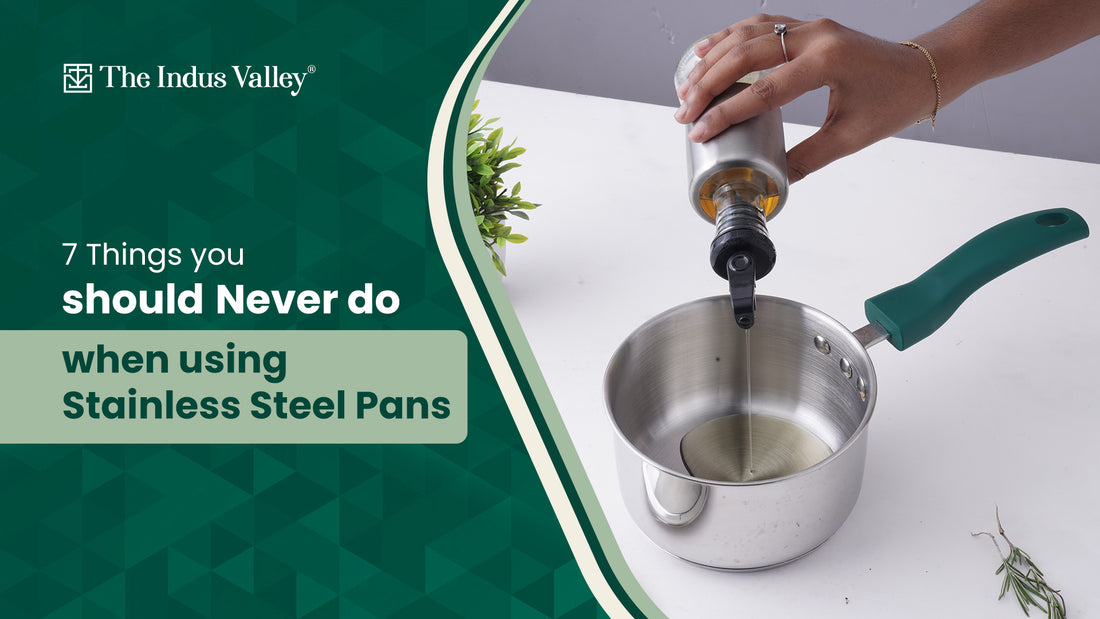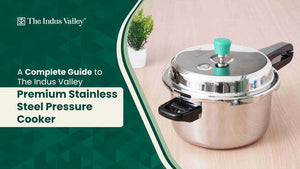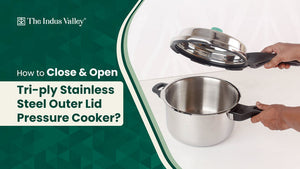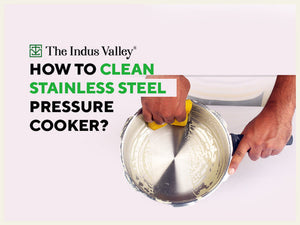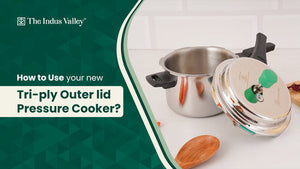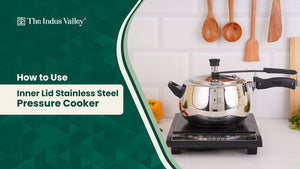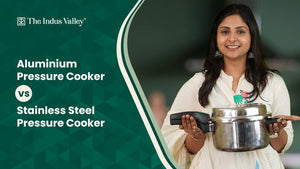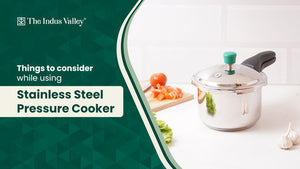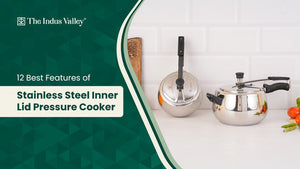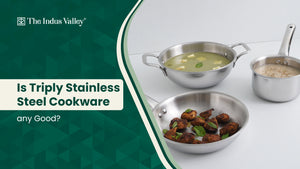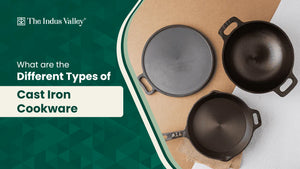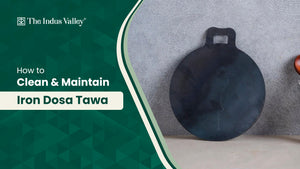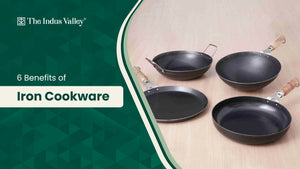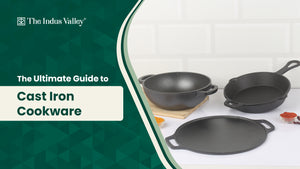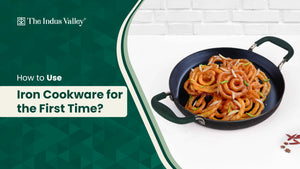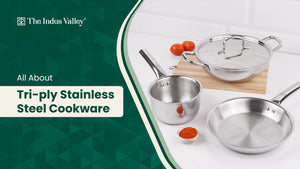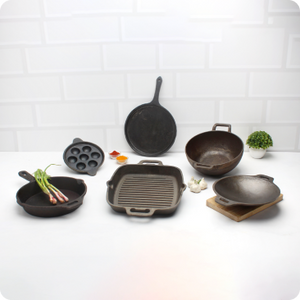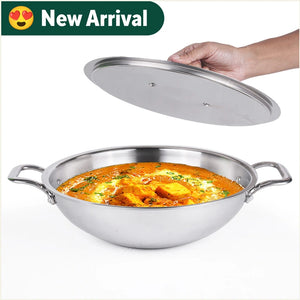Cooking utensils made of different materials that are available in the market today come with various benefits, and stainless steel cookware is one of the popular choices in Indian kitchens.
To use stainless steel cookware for longer and to enjoy easy and healthy cooking, it is important to know how to take good care of them.
Get to know and keep in mind the things you should never do while using stainless steel cookware.

Seven Common Mistakes People Make with Stainless Steel and Tri Ply Stainless Steel Pans
If you are new to using stainless steel cookware, don’t worry! Here is a list of seven things you should avoid doing to your stainless steel pan.
1. Heating Empty Stainless Steel Pans
Many popular recipes ask people to heat empty pans before adding oil to the pans. It is okay to heat your pan, but only for a short time and only at a low temperature.
Overheated oil in your stainless steel pan and tri ply cookware will break down, thereby making it gluey and sticky and leaving residue on the food.
Boiling water in stainless steel pans for a very long time can also make your stainless steel pans turn yellow or brown with stubborn discoloration.
2. Using Pans on Grills and in Microwave Ovens
Always use normal stainless steel and tri ply stainless steel cookware at moderate heat or up to 600 degrees Fahrenheit.
Using stainless steel pans on a grill will make them much hotter than this and it can cause warping of the material.
Stainless steel cookware in microwave ovens will cause electrical currents in the metal and it is extremely dangerous as it can cause sparks inside the oven.
3. Putting Knives Inside Pans
Commonly, people forget to cut something before adding it to the pan but never cut any food while it is inside the pan.
Cutting food items in a pan will cause permanent and hard-to-clean marks on stainless steel cookware, which will keep getting stuck and collecting food deposits over time.
4. Scrubbing the Pan Using Steel Scrubbers
Using steel scrubbers indeed helps to remove food stains easily, but it is not a smart choice to clean stainless steel cookware.
Always use a scrubber with a brushed finish to clean a stainless steel pan as it is softer and gentler to clean pans without causing any scratches.
5. Washing Dishes in Dishwasher
Many manufacturers might suggest dishwashing for their pans and pots, but constant cleaning of stainless steel cookware in the dishwasher using detergents can ruin stainless steel cookware.
Most detergents used in dishwashers are corrosive and they will eat away the steel by meeting the layers of tri ply stainless steel cookware and reaching the exposed core of aluminium. This will result in the degrading of the metal.
6. Adding Salt to Cold Water in Pans
People usually add salt to the water while cooking pasta and vegetables to enhance the dish taste. However, do not put a lot of salt in cold water, as salt at the bottom of the pan will lead to the formation of white spots on the pan.
This happens only when you add salt to cold water; adding salt to stainless steel cookware with boiling water in it while cooking will not make it stick to the bottom of the pan.
7. Using Cooking Sprays
Cooking sprays that contain emulsifiers and anti-foaming agents along with oil mostly build up into a sticky coating on pans, which can be difficult to remove later.
Using alternatives such as butter will be a better choice to increase the life of stainless steel cookware.
How to Clean Stainless-Steel Pans and Keep Them Looking Brand-New?
Now that we discussed what you should never do with stainless steel cookware, let us see what you can do to clean and care for them in the long run.
Tri ply stainless steel cookware is durable, but following these simple steps will help you prolong its life even more.
The excessive build-up of calcium in the water will cause pale white patches on stainless steel cookware. Boil some amount of water with vinegar in the ratio of 3:1 and follow your usual cleaning method to get rid of the white patches.
The surface of stainless steel cookware sometimes develops discolouration by forming rainbow colours as a result of cooking food for a long time on high flames. Cooking highly acidic food in the pan can help remove these streaks from the pan.
Food is likely to get stuck on your tri ply stainless steel fry pan when you add cold food items when the pan is hot.
Scrape the stuck food using a gentle scrubbing pad to remove it, followed by soaking the pan in warm water and adding some baking soda to it.
If it is a tri ply stainless steel cookware, use a wooden spoon to remove the fine food particles from the cookware.
Frequently Asked Questions About Stainless Steel Pans
1. Can vinegar be used to clean stainless steel cookware?
Vinegar is effective for cleaning stainless steel cookware, especially while removing stuck-on food from the pans. The acetic acid in it helps break down tough food particles, thereby making it easy to remove it from the cookware.
2. Does cleaning stainless steel pans with salt and lime be of help in removing burnt food?
Salt and lime can be combined to prepare a cleaning solution to clean burnt food from stainless steel cookware. The acidic nature will help break down tough food particles and the roughness of salt will help scrub away the broken down particles.
3. Can we use soda to remove burnt oil from stainless steel pans?
Soda is an excellent solution to remove burnt oil from stainless steel. The acidic nature of cola also works well to remove other burnt food too, such as caramel.
Pour cola into the pan to cover the burnt areas and bring it to a gentle simmer. Take the pan away from heat after that and use a wooden spatula to scrape away the burnt food.
4. Is it safe to boil salt in stainless steel pans for removing burnt marks?
Salt is commonly used in the removal of burnt marks from the inside of a stainless steel pan rather than from its bottom. Make sure that you add the salt to the pan only after the water in it starts boiling.
Add a few spoonfuls of salt and turn off the heat right away. Let the water sit for some time, then empty the pot and scrub the inside of the pan using a soft sponge to remove burnt marks. Repeat these steps if necessary.
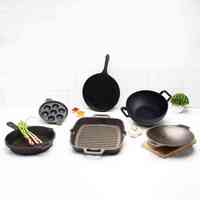
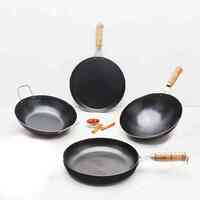
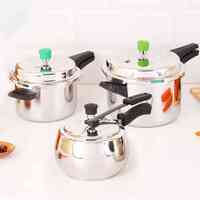
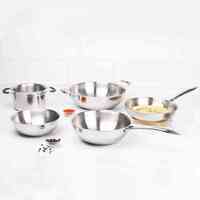
 Easy 7-Day Return
Easy 7-Day Return
 Additional ₹100 Off on Prepaid Orders*
Additional ₹100 Off on Prepaid Orders*
